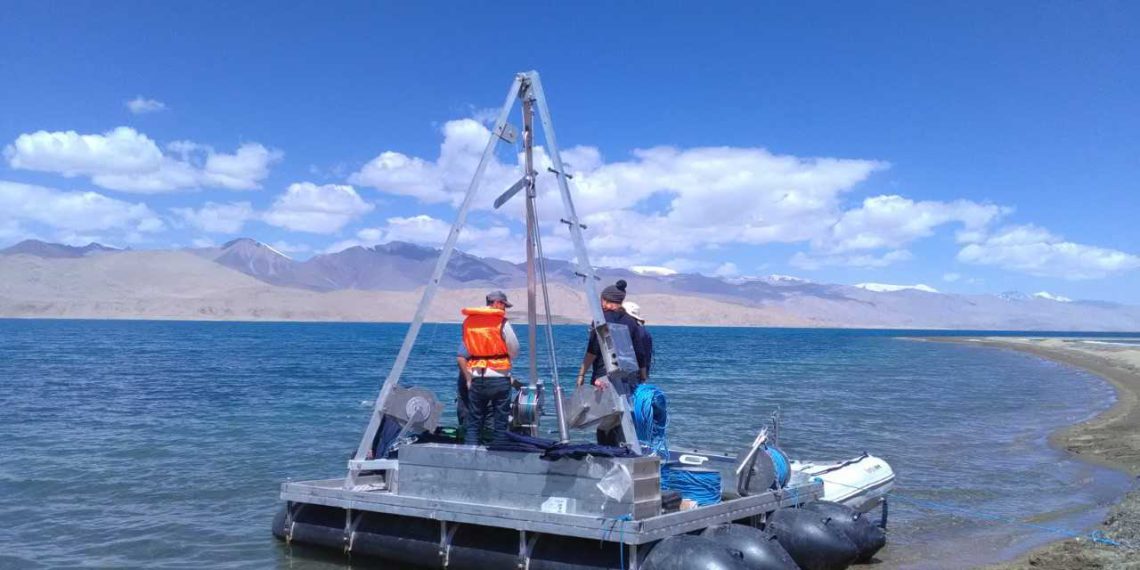In alpine locations, lakes react sensitively to climate change. Researchers led by the Leibniz Institute of Freshwater Ecology and Inland Fisheries (IGB), and the Department of Geosciences at Southwest Jiaotong University in Chengdu, China, have closely analyzed changes in a lake on the northern Tibetan plateau since the end of the last ice age. Sediment samples dating back thousands of years show strong ecological changes, due to rising temperatures and the influence of melting glaciers. This was true at the end of the last ice age, as well as in the middle of the Holocene epoch, and may be relevant today as climate change continues. The study, published in Communications Earth & Environment, also shows that the changes can occur with a time lag.
The researchers studied the dynamics of the water balance at Hala Hu Lake and the timing of ecological responses in the lake and its catchment during and after the Ice Age. The study provides important information on how glacier-influenced mountain lakes might evolve under climate change.
“There is scientific evidence that mountain lakes, previously largely unaffected by humans, will be quite sensitive to climate change events. To better understand the changes and processes, it can be helpful to look back — in this case, we looked back about 23,000 years.”
- Dr. Bernhard Aichner, IGB Researcher
Sediment cores as climate archives and biomarkers as chemical fossils
Using sediment cores, the researchers were able to read events as if they were on a timeline. The sample material was analyzed for biomarkers at the Geo Research Centre (GFZ) in Potsdam. These are characteristic molecules that remain in the soil as chemical fossils for thousands of years, even though the organism that produced them has long since decayed. General succession, the appearance and disappearance of various biomarker groups, representative of grasses, algae, and aquatic plants, showed the spread and decline of vegetation on land and organisms in water. Hydrogen isotopes of these molecules provided information on atmospheric, glacial, and lake water fluxes.
Mountain lakes react sensitively and with a significant time lag to climatic changes
Marked variations in concentrations and ratios of aquatic biomarkers and hydrogen isotope values over the period 15,000–14,000 years ago and 8,000–5,000 years ago indicate significant shifts in lake water balance and ecological equilibrium.
Weather and climate in much of Asia are shaped by the monsoon, the strength of which has alternately increased and decreased over the millennia. The research team was able to show that the ecosystems in the lake and its catchment area responded significantly and with a time lag to these hydroclimatic changes. The main trigger for ecosystem responses was not increased precipitation, but rising temperatures after the end of the last ice age, as well as during the Holocene climate optimum, and associated glacier retreat and increased meltwater flow into the lake.
“It got warmer and the glaciers melted. These events clearly affected biological processes in the lake and surrounding land. In particular, in the lakes we see a large and erratic increase in algae, as well as changes in the composition of phytoplankton communities. The lesson is that we need to keep mountain lakes especially in mind in times of climate change. They are likely to change significantly over the next few decades. And these changes may not be immediately apparent,” says Bernhard Aichner.

















